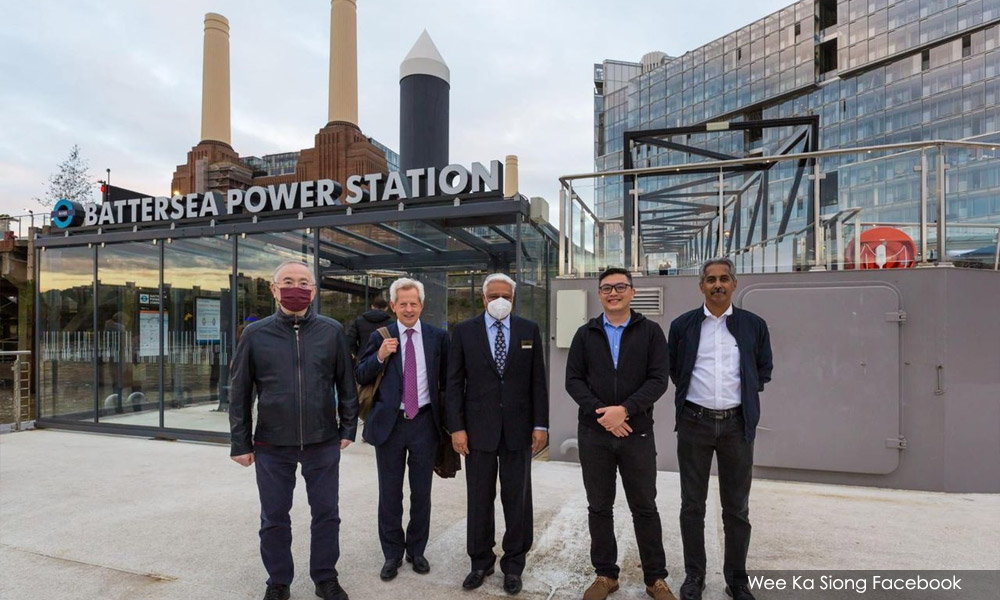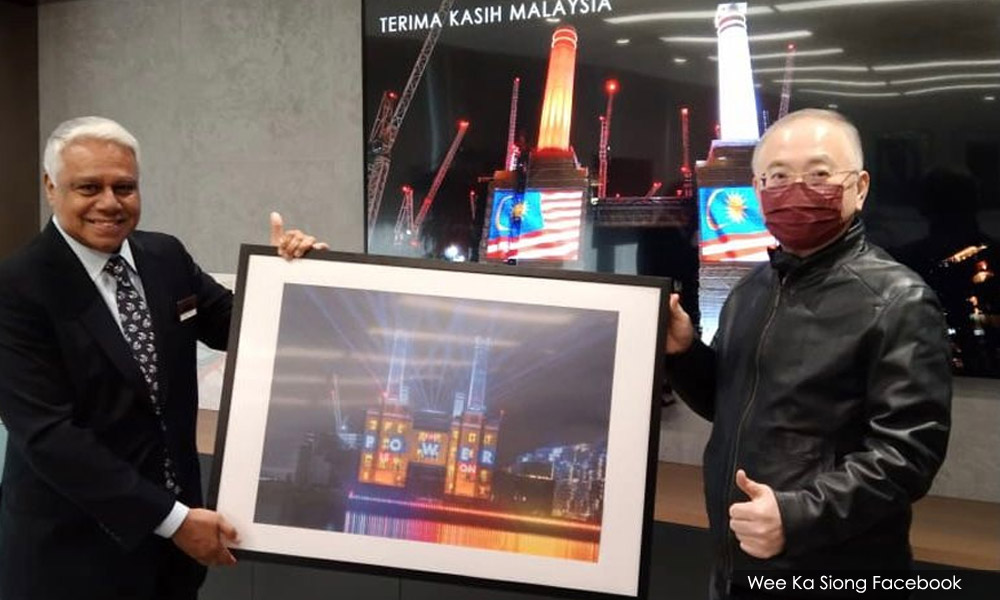"Battersea Power Station Development Company Ltd (BPSDC) said Transport Minister Wee Ka Siong also travelled on the newly-opened extension to the Northern Line and arrived at the development via the brand-new Zone 1 Battersea Power Station underground station, which received £300 million (RM1.71 billion) in developer contributions from the project and opened last month.
It said the investment by the Malaysian shareholders namely Sime Darby Property Bhd (SDP), SP Setia Bhd and the Employees Provident Fund (EPF) had been instrumental in providing the much-needed new public transport infrastructure that would benefit the wider community, residents, local businesses and the tens of millions of visitors expected once the project opens its doors."
Bernama report, Oct 16.
If this was a light-hearted piece, it would be suggested that Malaysians be offered a discount when travelling from Central London to the Queen Elizabeth Tube station because we, Malaysians made a significant financial contribution to that sector of the Northern Line.
On a serious note, and for the record, of the £300 million, the Malaysian developers directly contributed £200 million or RM1.14 billion towards the extension while the remainder came from other developers in the vicinity.
Shouldn’t Malaysians be shocked that from that of this amount, about one-third or RM380 million came from Malaysian employees through the Employees’ Provident Fund because it is one of the three partners in the project?
The cost of the extension was £1.1billion - under budget by £160m. It was funded by the private sector, including the developers of Battersea Power Station, with contributions from other developments across the Vauxhall, Nine Elms and Battersea area. Construction began in 2015, and the extension opened last month.
Although BPSDC did not disclose the amount it contributed, these figures were obtained from information sought under the UK’s Freedom of Information Act. The authority in charge of public transport in London, Transport for London (TfL) said the money for the extension came from various sources.
In a written reply, it said: “Developer contributions are in the form of borough community infrastructure levy receipts and Section 106 payments. Battersea Power Station Ltd is contributing £200 million (2012/13 prices).”
Section 106 agreements based on that section of the Town and Country Planning Act 1990 are private agreements made between local authorities and developers and can be attached to planning permission to make acceptable development which would otherwise be unacceptable in planning.
It can be used to help fund affordable housing as well as roads, parks and youth services. The quantum is negotiated between a developer and council to help make new development schemes more attractive to communities. Besides, councils also impose the Community Infrastructure Levy (CIL) and this money does not need to be used for providing infrastructure on the site it is collected from.
“The rest of the boroughs’ contribution (LB Lambeth and LB Wandsworth) is £66.3 million (2012/13 prices) and comes from various new developments that are being built in the Nine Elms area,” TfL said.
Nothing for Malaysians
Isn’t it ironic that Malaysian developers, directly or indirectly, have been “instrumental in providing the much-needed new public transport infrastructure” in London and also contributed to the construction of affordable homes and youth activities?
Isn’t it ironic that the same developers have made hardly any contributions to the transport infrastructure in Malaysia and neither have they been involved in affordable housing?
Isn’t it ironic that the EPF’s funds are from employees and it has contributed to enhancing London’s transport system?
Isn’t it ironic that it did not make similar contributions to a public transport system that runs through a large tract of land in Sungai Buloh, Selangor which it owns via its subsidiary, Kwasa Land?
Wouldn’t similar contributions from the same developers also help improve the “much-needed” public transport system in their own backyard?
The contribution was a condition imposed by the Lambeth Borough Council and the Wandsworth Borough Council for the approval for the mammoth project in South London.
The question is: How much do developers contribute towards our own transport systems like the Light Rail Transit (LRT) of the Mass Rapid Transit (MRT)?
Impose conditions on developers
In Malaysia, local authorities compel developers to make contributions under Section 32 of the Town and Country Planning Act, which states: “Where a local plan or an alteration of a local plan affects a change of use, density, or floor area in respect of any land so as to enhance the value of the land, a development charge shall be levied in respect of any development of the land commenced, undertaken, or carried out in accordance with the change.”
Although developers contribute under this provision, it hardly covers or goes directly to public transport. Some may have built shelters doubling up as bus stops in their housing areas as their “contribution”.
After all, developers have been advertising their housing projects as “close to LRT station” and “five minutes’ walk to the MRT station.”
Sime Darby and SP Setia paid about 20 percent of the cost of the train connection to the Battersea. Both have built thousands of houses in Malaysia and shouldn’t they emulate what they had done in London?
Going by BPSDC’s claim that “a new public transport infrastructure that would benefit the wider community, residents, local businesses and the tens of millions of visitors”, wouldn’t millions of Malaysians benefit from a mammoth injection of funds into our public transport infrastructure as well?
Has the time come for the government to adopt the same requirements and compel developers to pay towards the improvement of the transport infrastructure?
Why not? As usual, the developers would argue that any such payment would increase the selling price of houses, but aren’t they benefitting when there’s an excellent public transport system to the areas, they are building houses? - Mkini
R NADESWARAN says a levy of sorts should be imposed on developers to lessen the burden on taxpayers whose money is now being used for capital expenditure of public transport infrastructure. Comments: citizen.nades22@gmail.com
The views expressed here are those of the author/contributor and do not necessarily represent the views of MMKtT.







No comments:
Post a Comment
Note: Only a member of this blog may post a comment.